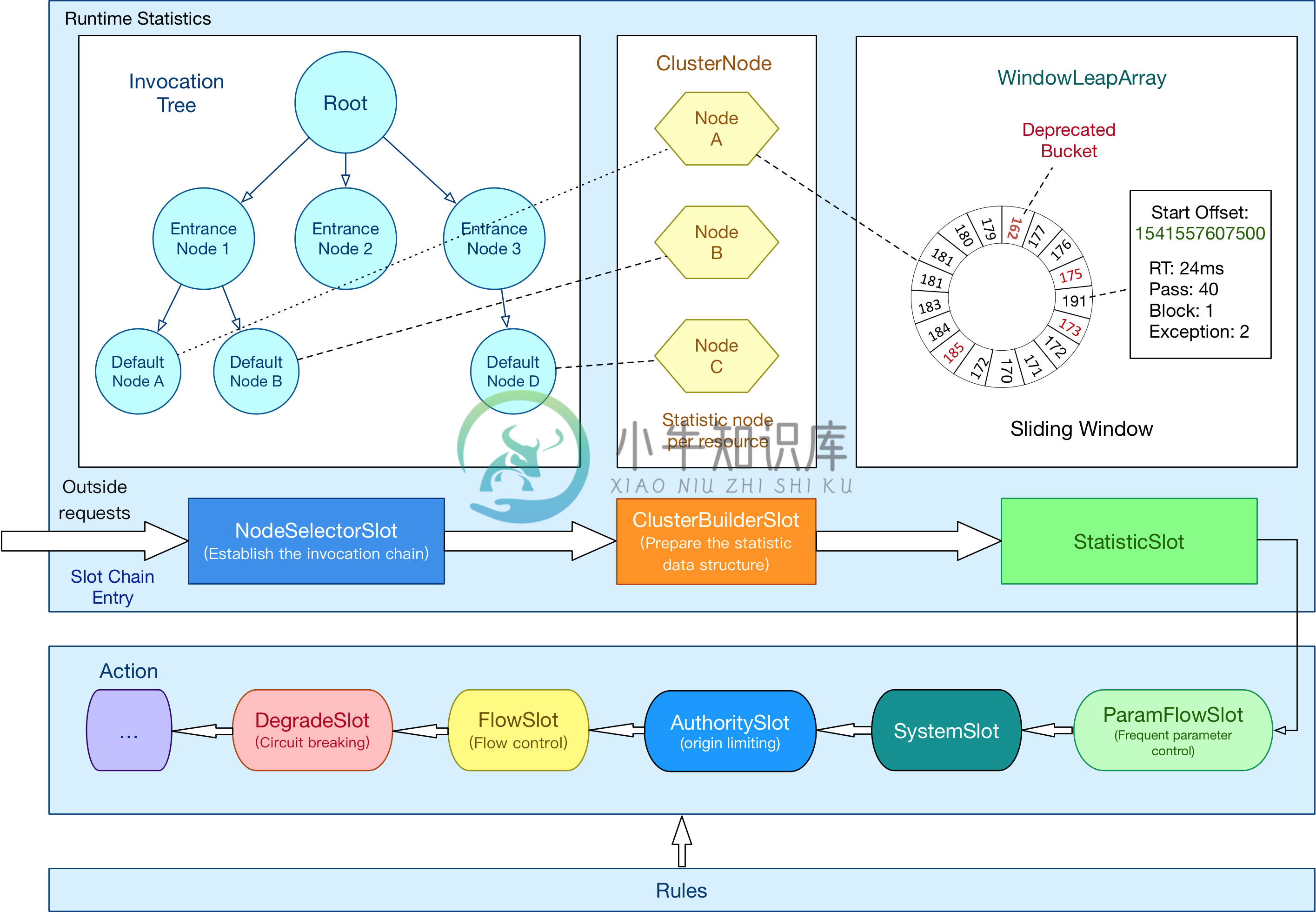How it Works
When an entry is created, a series of slots are created as well. These slots have different responsibilities, some for tracing, some for collecting and calculating run-time information, some for flow control, some for circuit breaking, and so on. You can customize your own logic by adding slots based on the following fundamental slots.

NodeSelectorSlot: Trace nodes and form a calling tree in the memory
ContextUtil.enter("entrance1", "appA");
Entry nodeA = SphU.entry("nodeA");
if (nodeA != null) {
nodeA.exit();
}
ContextUtil.exit();
The code above will generate the following structure in memory:
machine-root
/
/
EntranceNode1
/
/
DefaultNode(nodeA)
Each DefaultNode is identified by both the context and resource name. In other words, one resource id may have multiple DefaultNode distinguished by the entry names declared in ContextUtil.enter(contextName).
ContextUtil.enter("entrance1", "appA");
Entry nodeA = SphU.entry("nodeA");
if (nodeA != null) {
nodeA.exit();
}
ContextUtil.exit();
ContextUtil.enter("entrance2", "appA");
nodeA = SphU.entry("nodeA");
if (nodeA != null) {
nodeA.exit();
}
ContextUtil.exit();
The code above will generate the following structure in memory:
machine-root
/ \
/ \
EntranceNode1 EntranceNode2
/ \
/ \
DefaultNode(nodeA) DefaultNode(nodeA)
The calling trace can be displayed by calling curl http://localhost:8719/tree?type=root.
EntranceNode: machine-root(t:0 pq:1 bq:0 tq:1 rt:0 prq:1 1mp:0 1mb:0 1mt:0)
-EntranceNode1: Entrance1(t:0 pq:1 bq:0 tq:1 rt:0 prq:1 1mp:0 1mb:0 1mt:0)
--nodeA(t:0 pq:1 bq:0 tq:1 rt:0 prq:1 1mp:0 1mb:0 1mt:0)
-EntranceNode2: Entrance1(t:0 pq:1 bq:0 tq:1 rt:0 prq:1 1mp:0 1mb:0 1mt:0)
--nodeA(t:0 pq:1 bq:0 tq:1 rt:0 prq:1 1mp:0 1mb:0 1mt:0)
t:threadNum pq:passQps bq:blockedQps tq:totalQps rt:averageRt prq: passRequestQps 1mp:1m-passed 1mb:1m-blocked 1mt:1m-total
ClusterNodeBuilderSlot: Build cluster node named by resource
This slot maintains resource runtime statistics (response time, QPS, thread, count, exception), and a list of origin callers' statistics. The origin caller's name is marked by origin in ContextUtil.enter(contextName, origin).
The information can be displayed by calling the following HTTP API: http://localhost:8719/origin?id=xxxx
id: nodeA
idx origin threadNum passedQps blockedQps totalQps aRt 1m-passed 1m-blocked 1m-total
1 caller1 0 0 0 0 0 0 0 0
2 caller2 0 0 0 0 0 0 0 0
StatisticSlot: Collect runtime statistics
- ClusterNode (ResourceNode): Total statistics of a resource;
- Origin node: Statistics of a ClusterNode from different callers;
- DefaultNode: The entry of the node, marked by context entry name and resource ID;
- The total sum statistics of incoming entrances.
The StatisticNode is backed by sliding window data structure (LeapArray):


